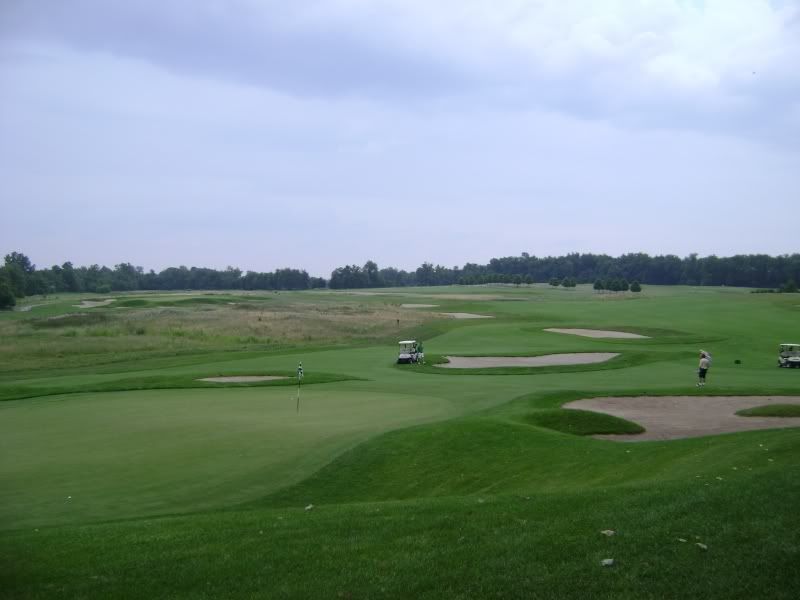You have heard all of us Hoosiers talk about this course, but I can't remember anyone ever posting one photo of the course.
The location of the golf complex is located slightly outside of town, about two miles off of Interstate 65. Blessed with some wonderful terrain movement and a natural creek running through the grounds it was easy to imagine a golf course over this one-time farmland. Tim Liddy was hired to create something akin to the famed Scottish links courses, or as close as he could in central Indiana. Liddy did just that with a wonderful layout that uses the terrain wonderfully. He routed a group of holes around a rise in the middle of the golf course and then used the creek as the central focus on another set. Perhaps the one downfall with the effort, and no fault of Liddy, is the lack of real movement in the eastern most holes where the area is about as flat as could be imagined. Something else that Liddy did differently on the course was he did not route two separate loops of nine holes. The player only has the option to play all eighteen with only the finisher running close to the clubhouse. That is just as well, as no one could pass up to play the holes that were put into place.
Hazards are often the defining character of a course and using them to their fullest is the most difficult job for any architect. Liddy worked hard at The Trophy Club to do just that. The creek is actually in play on six holes, but only cuts through one of them and requiring a forced carry. Three additional small ponds provide some strategic elements on four other holes throughout the round. Three of these holes are located in the flatter eastern portion of the course. Sand bunkers also a prime hazard with over 120 of them found throughout the course. Like many other Liddy courses, they are flat-bottomed in most cases and run along the edges of the hole. But in over a half-dozen instances there is a trap in the center-line of the hole, thus requiring some forethought by the player on those particular shots. The bunkering on the exterior of the holes is often placed into the face of ridges and sloping terrain, highlighting their existence for the player.
As mentioned earlier, the natural look of the course is a primary draw. Part of that is due to the use of native grasses along the exteriors of the holes that often contrast wonderfully with the color and texture of the fairway and green areas. In many instances this overgrown area is very close to the fairway and at times there was no second cut of rough before going into the deep grasses. But something that is an unquestionable strength of the course is the use of the flowing terrain by Liddy. In several instances he was able to use this to create strategic options on the course in the form of alternate fairways and shortcuts over the rougher terrain. This combined with the excellent maintenance practices create a wonderful looking course that is also blessed with some excellent views.
Liddy, like his mentor Pete Dye, is a master green builder and provides some wonderful examples of his ability at Trophy Club. In many cases the greens are angled towards the preferred line of approach. This does two things. It creates some strategic interest to them, but more importantly it also counteracts the inherent advantage to the player who is willing to hit the more daring shot. In many cases, Liddy then puts a hazard between the player with the best angle and the green, so there is plenty of challenge in finding the putting surface. Almost all of the greens are located directly alongside sand or water adding to the pressure. Several of them also have run-offs into hollows or chipping areas around the green that provide numerous options for recovery. The greens have a similar feel to them as they all run from back to front with one exception. Some have greater depth and some are turned to have more width. To really prove his willingness to create eighteen different greens Liddy even created a Biarritz style green on the sixth hole with a deep gulley running through the complex.
The sixth green.

Holes of note:
Hole 2 – 576 yards - The second gives a wonderful introduction to the set of par fives. The creek splits the hole diagonally with the option of trying to clear the water at its nearest point or laying back in the fairway. For those that lay back, the challenge is in the second shot and avoiding the bunkers and trying to get as far down the hole and right as possible. If you fail to do this, then you have an uphill approach over deep bunkers to the plateau green.
View from the fairway
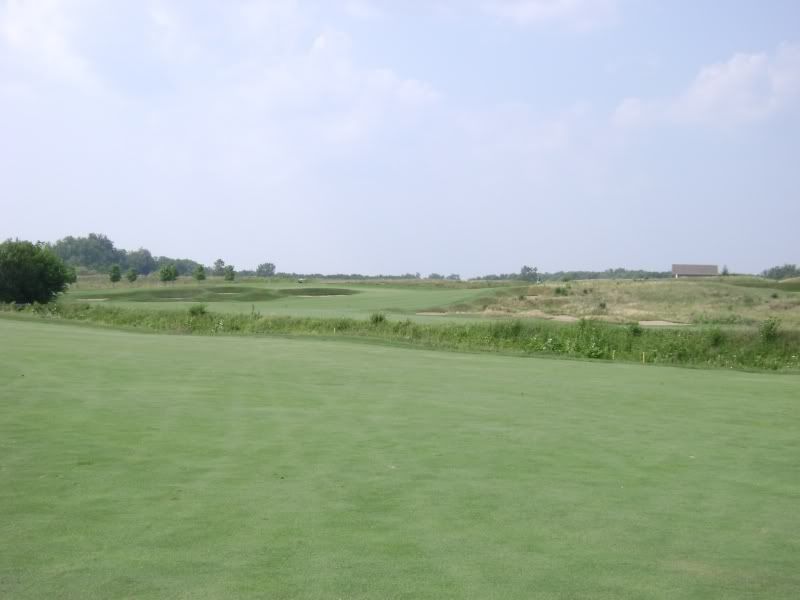
Hole 4 – 212 yards - The fourth plays along the edge or a rise with bunkers running along the left side of the hole all the way to the green.
The tee shot
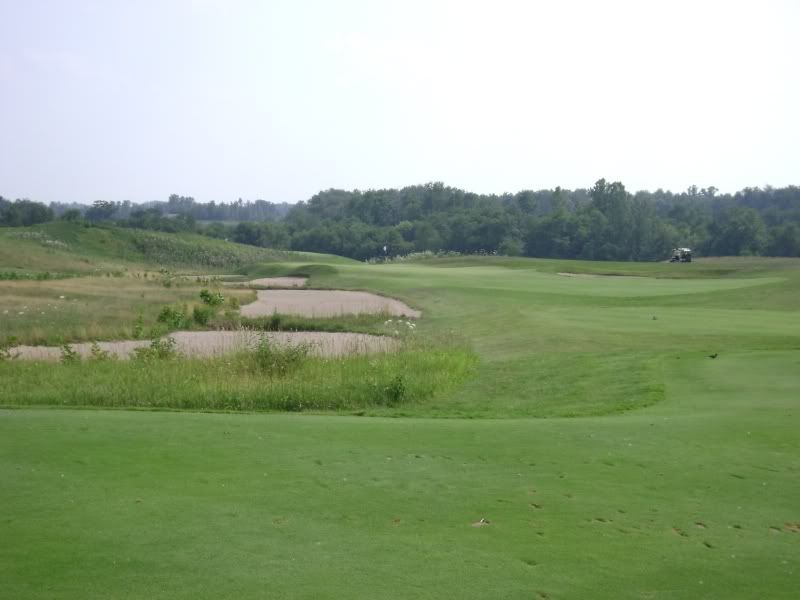
Hole 5 – 354 yards – A short par four that tempts the player from the tee to try and reach the green by going over all of the deep grass. A bunker to the right side catches many tee shots. A nice little par four.
The approach
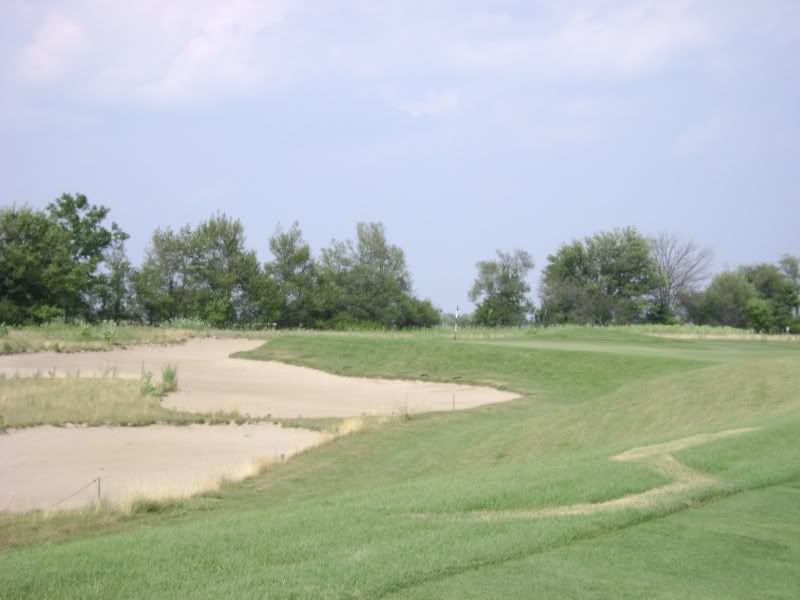
Hole 8 – 214 yards - A pond is used as the primary hazard to the right as the eighth edges alongside it all the way to the green and creates perhaps the prettiest par three on the course. Anything in the bunkers on the back side is dead as the green runs hard towards the water.
The tee shot with water on the right.

Hole 9 – 576 yards - The ninth is over flat terrain but offers several hazards in the center line of the hole that require some thought to get around. The narrow green, only about ten paces from front to back, is protected in front by a lone bunker.
The pitch shot into the green must clear the bunker for any middle green pin placements
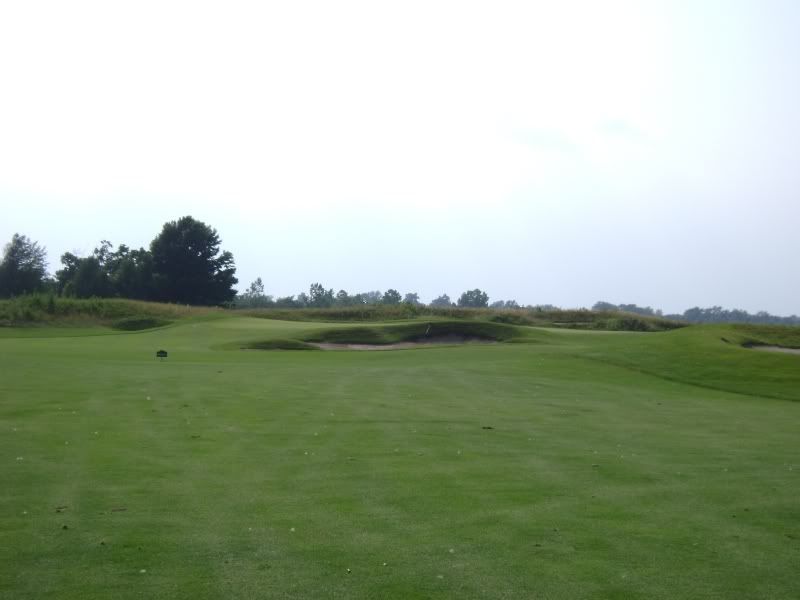
Hole 10 – 356 yards - The tee shot is out to a plateau for those that are afraid to try and cut the hole over the deep stuff to the left. The second is then a delicate pitch downhill to a steeply sloped putting surface with dangerous fall-offs both left and long. For those that attempt to cut the hole but fail there are deep bunkers on the left side to exact a swift and harsh penalty. This hole reminds me of the 5th at Dornick Hills less the trees.
the tee shot with the fairway rolling down and to the left towards the green.

Hole 11 – 553 yards - The best hole on the course is the eleventh. The hole is placed along the edge of a ridge and runs along the edge until it reaches the green at the highest point on the course. The second shot is the most interesting on the course as the player must decide if they will attempt to go around the bunkers in the middle of the fairway to the blind higher side of the fairway or go to the wider lower section. If they go the lower route, the approach is dramatically uphill to a blind green and over a very deep bunker. Once at the top of the hill, the course is in almost full view to the player and creates a one of a kind vista.
The approach into the green from the left reveals the elevation change on this hole.
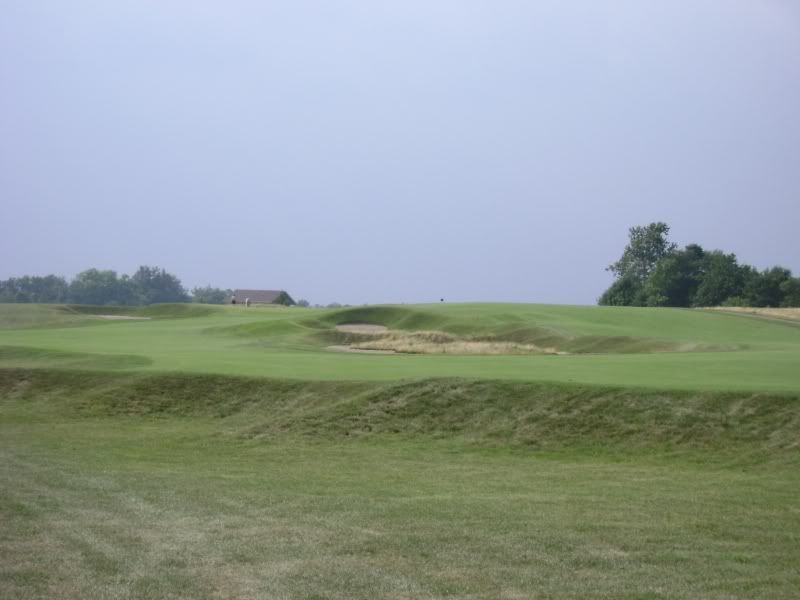
As does the view from behind with the tilt of the land.
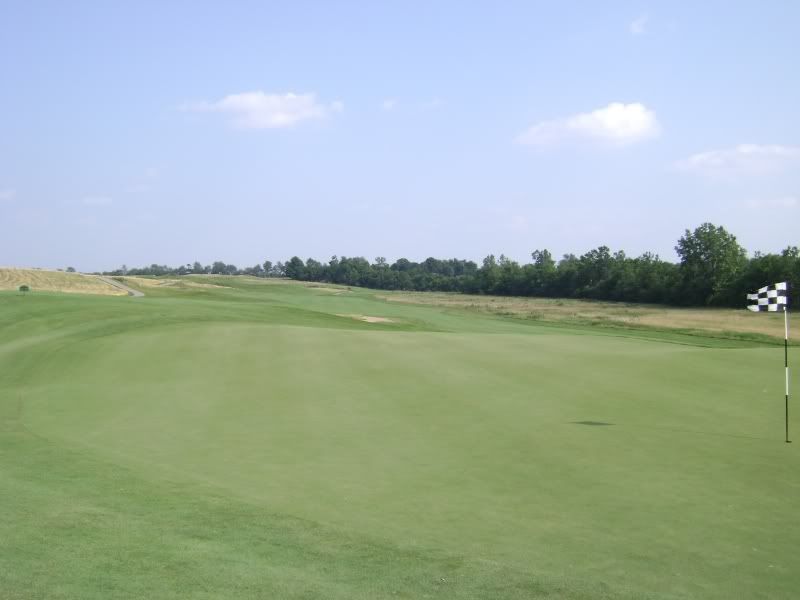
Hole 13 – 481 yards - The thirteenth is a wonderful hole with a semi-blind drive over a crest with a downhill approach to an angled green.
The approach. Sorry for the poor photo on these two, a storm was blowing in as I was taking the photos.
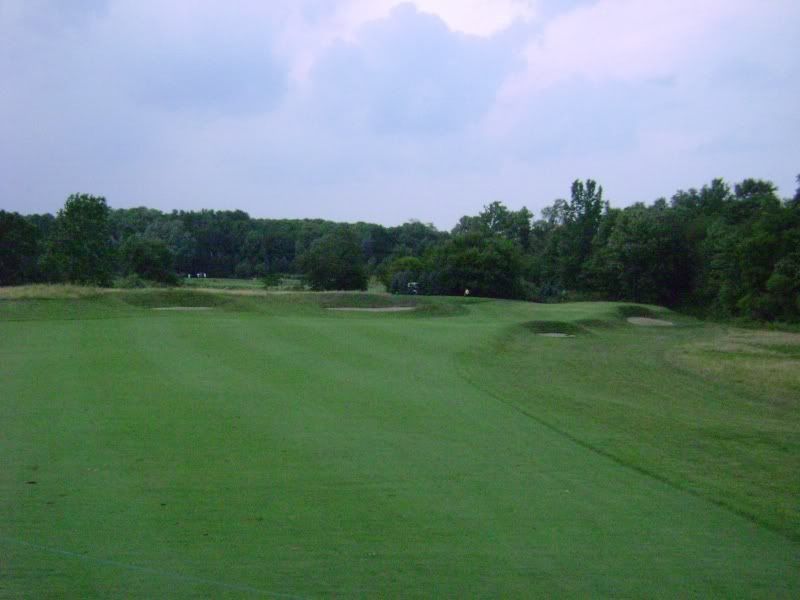
The green
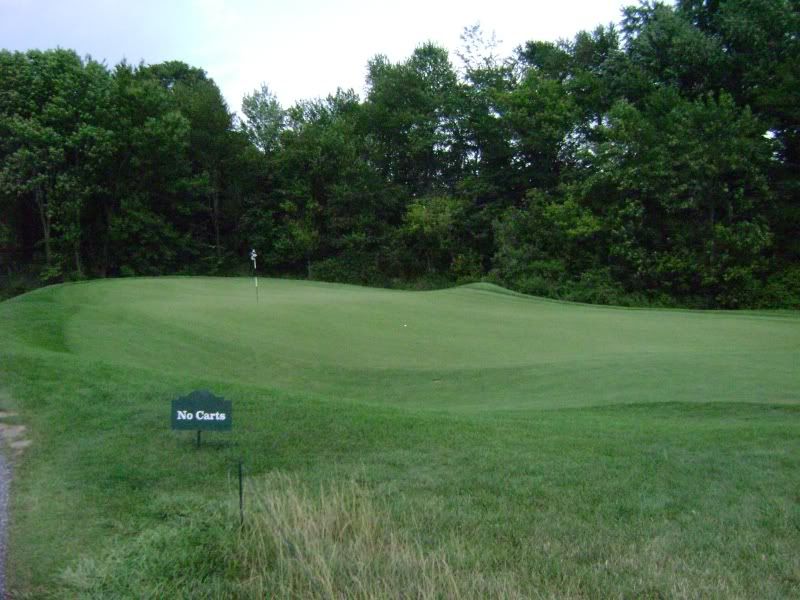
Hole 15 – 422 yards - The fifteenth may be the best as it features a monster sized bunker on the left that narrows the landing zone of the drive. The approach then must go over a slight valley with to a green perched into the base of a ridge with gnarly sand bunkers on the right and run-off to the left that leads to a chipping area.
The tee shot with a big mouth bunker creeping into the left side of the fairway. Be careful not to go too far right and into the other hazards.
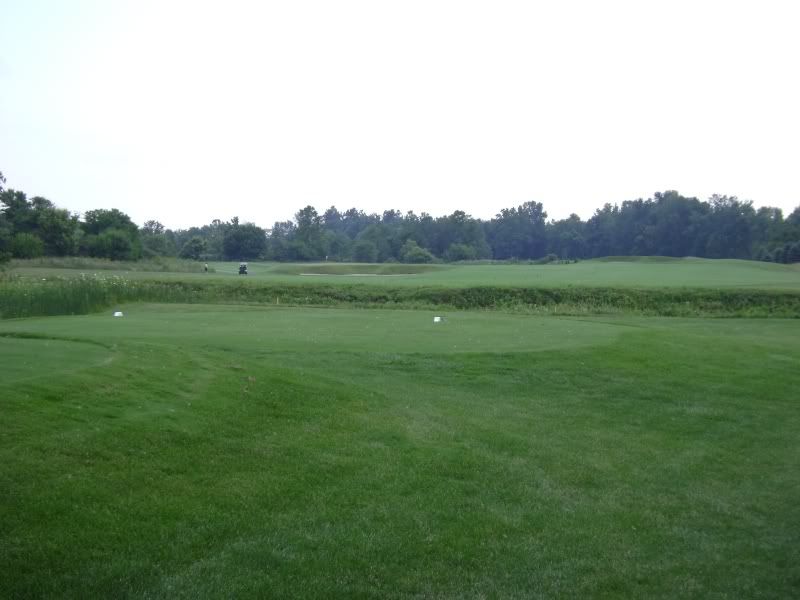
The approach. Note all the space to the left for pull approaches that is cut at fairway height.
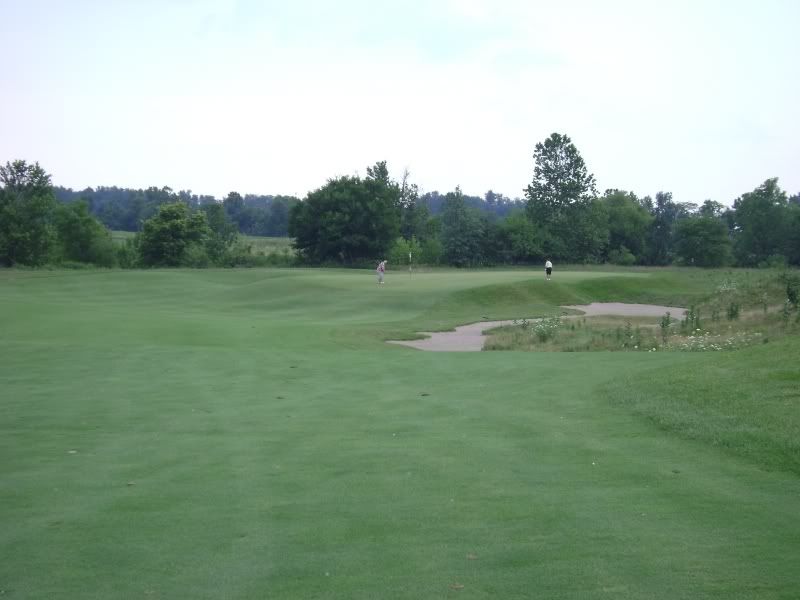
Hole 16 – 519 yards - The sixteenth runs along the creek from tee to green with no hope if one goes just slightly left as the fairway becomes tighter all the way to the hole.
From behind you see how close the creek is to the green and how the ridge runs into the elevated green surface.
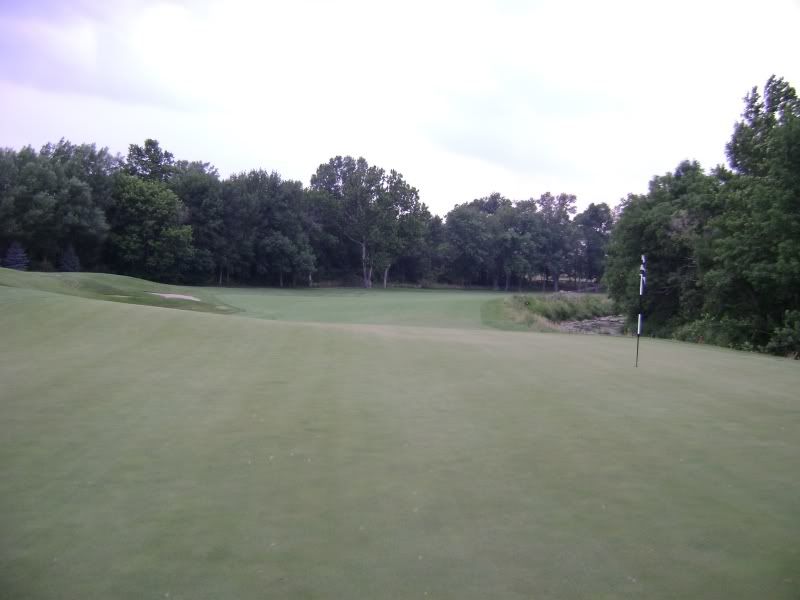
Hole 17 – 220 yards - The most different of the par threes is the last of the group, the seventeenth. It is surrounded on three sides by deep grass faced bunkers while presenting the most intimidating of the group.
A unique hole for the course.
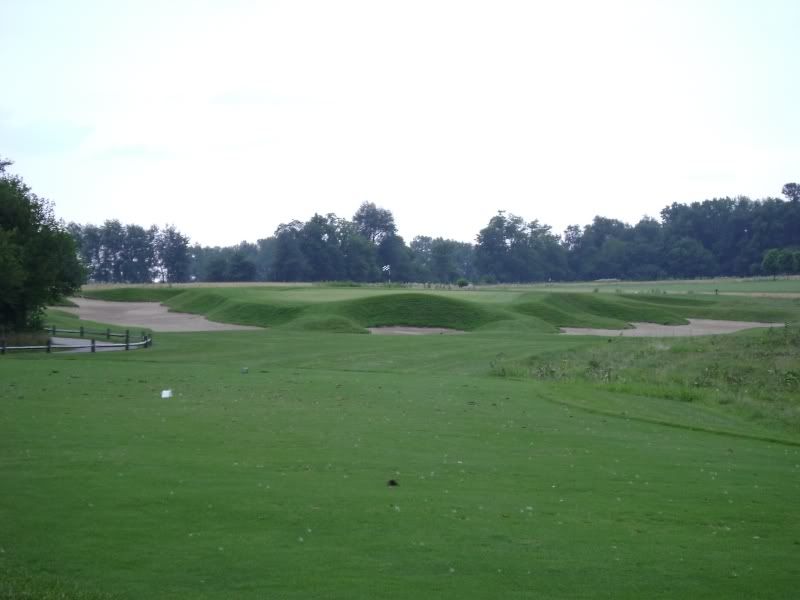
Hole 18 – 467 yards - The closer is no sleeper. The drive goes out to a sloping fairway as it doglegs from left to right. The green is placed into a rise with bunkers protecting the inside line of the hole.
A look back down the final hole from above the green.
